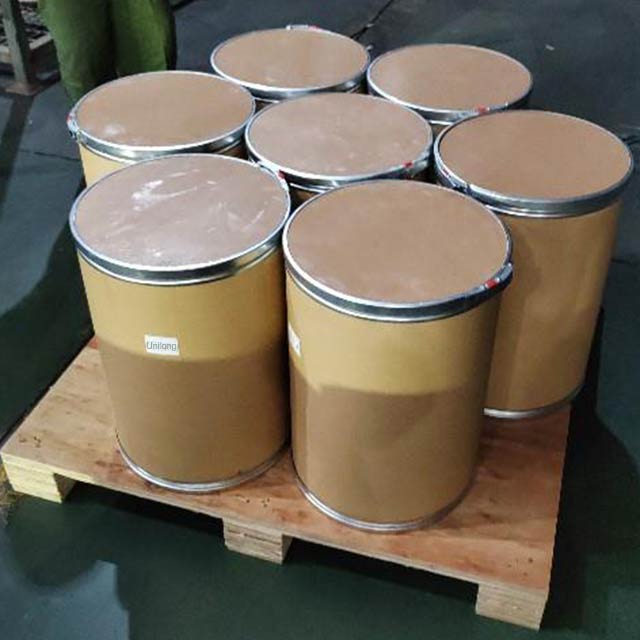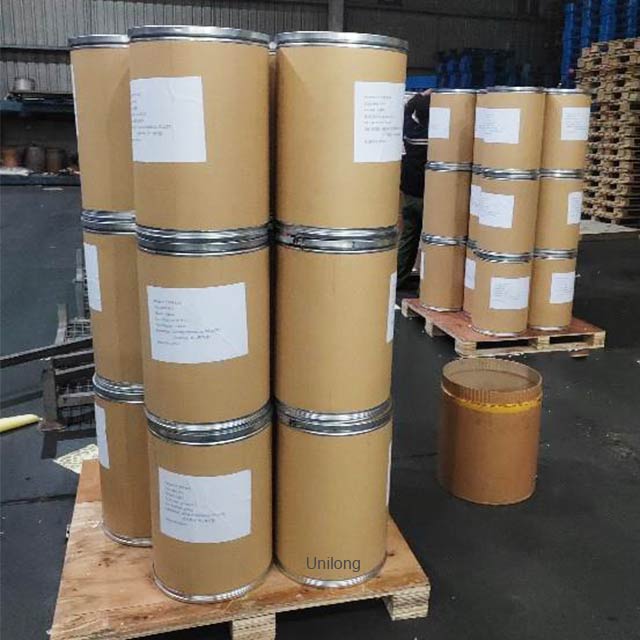Bis(4-hydroxyphenyl) Sulfone CAS 80-09-1
Bisphenol S (BPS), CAS number 80-09-1 and chemical name Bis(4-hydroxyphenyl) Sulfone, is an aromatic compound consisting of a bisphenol structure linked by a sulfone group. Due to the strong polarity and stability of the sulfone group (-SO₂-) in its molecular structure, its performance differs significantly from that of common bisphenol A (BPA), leading to its widespread use in the chemical, materials, and daily chemical industries.
| Item | Standard |
| Appearance | White powder |
| CAS | 80-09-1 |
| Product name | Bisphenol S |
| Melting point | 245-250°C (lit.) |
| Boiling point | 363.4°C (rough estimate) |
| Density | 1.366 |
1. Polymer Materials: Core Monomers and Modifiers
Epoxy Resin Synthesis: As a bisphenol A replacement monomer, it condenses with epichlorohydrin to produce "bisphenol S-type epoxy resin." This resin exhibits enhanced heat resistance (glass transition temperature (Tg) 30-50°C higher than bisphenol A epoxy resin), corrosion resistance, and mechanical strength. Bis(4-hydroxyphenyl) sulfone is used in high-temperature electronic packaging materials, aerospace structural adhesives, and chemical anti-corrosion coatings.
Polycarbonate (PC) Synthesis: It is used in the synthesis of "bisphenol S-type PC," improving the heat resistance and UV aging resistance of PC materials. It is suitable for applications such as outdoor lighting housings and automotive sunroofs.
Polysulfone Resin Modification: Bis(4-hydroxyphenyl) sulfone is used as a comonomer in the synthesis of polysulfone resins, enhancing the resin's solvent resistance and mechanical properties. It is used in high-end medical devices (such as dialyzers) and electronic component housings.
2. Daily Chemicals and Textiles: Functional Additives
Cosmetic Raw Materials: Bis(4-hydroxyphenyl) sulfone is added to sunscreens and skincare products as a UV absorber or antioxidant. Utilizing the antioxidant properties of the phenolic hydroxyl group and the stability of the sulfone group, it reduces UV damage to the skin and extends the shelf life of the product.
Textile Auxiliary: Bis(4-hydroxyphenyl) sulfone is used in the synthesis of textile flame retardants or antistatic agents. By reacting with the hydroxyl groups on the fiber surface to form a stable bond, it imparts flame retardancy and antistatic properties to the fabric. Suitable for textiles such as workwear and curtains.
3. Food Contact Materials and Plastics: Bisphenol A Substitute
Food Packaging Materials: Bisphenol S is used in the production of food-grade epoxy resin coatings (such as the inner coating of cans) and food contact plastics (such as baby bottles and tableware). Due to its low migration, it complies with food contact safety standards such as EU Directive 10/2011 and China GB 4806.
Thermal Paper Coating: As a BPA substitute, it is used in combination with leuco dyes and color developers for thermal paper (such as supermarket cash register paper and express delivery labels) to prevent BPA from migrating into the human body through skin contact.
4. Other Applications
Pharmaceutical Intermediates: Bisphenol S is used in the synthesis of drugs with anti-inflammatory and antibacterial activity.
Analytical Chemical Reagents: Bisphenol S is used as an acid-base indicator or complexing reagent for the quantitative analysis of metal ions (such as iron and copper). The phenolic hydroxyl group forms a stable complex with the metal ions, producing a characteristic color change.
Strong acidity: The Bisphenol S molecule contains two phenolic hydroxyl groups and one strong electron-withdrawing sulfone group (-SO ₂ -), making it more acidic than common phenols.
Typical phenolic reactivity: The two phenolic hydroxyl groups in the Bis(4-hydroxyphenyl) Sulfone molecule have high reactivity and can undergo various chemical reactions such as etherification, esterification, and polycondensation, for example, reacting with formaldehyde to form resin.
Good stability: Bis(4-hydroxyphenyl) Sulfone has certain heat resistance, oxidation resistance and light stability, but it may decompose under strong acid, strong alkali or strong oxidant conditions.
High thermal stability: The thermal decomposition temperature of Bisphenol S is above 300℃, demonstrating good stability during high-temperature processing
Low toxicity: Bisphenol S is a low-toxicity substance.
Bisphenol S can be used as A substitute for bisphenol A: Due to the potential health risks of bisphenol A, bisphenol S can be used as a substitute for it in the synthesis of high molecular materials such as polycarbonate and epoxy resin, and the synthesized high molecular materials have higher thermal stability, chemical stability and mechanical properties.
25kgs/drum, 9tons/20’container
25kgs/bag, 20tons/20’container

Bis(4-hydroxyphenyl) Sulfone CAS 80-09-1

Bis(4-hydroxyphenyl) Sulfone CAS 80-09-1












